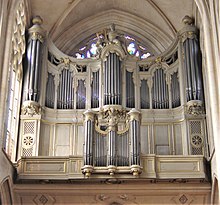Jonathan Kizer
Dr. Jessica O’Hara
English 137 H
20 July 2015
On the Evolution of Child Labor in the United States
What does one imagine when one hears the term child labor? Do people imagine the children on bikes throwing newspapers at houses? Do they imagine children at street corners peddling Dixie cups full of unprofessionally poor lemonade they had made without help? Or do people imagine little boys from coal mining towns working in coal breakers? Do they imagine children working in textile mills or tool factories? It depends on what generation you ask the question to. When asked, most Americans today will say that he started his first job when he was sixteen years old and it was at some local grocery store or fast food restaurant. If this was the nineteenth century, an American may say that he was ten years old and he worked as a paper boy or a factory worker. These are two different forms of child labor. Over generations, there has been a shift in child labor. Children were seen doing hard, difficult work that today we think are for only adults. Now, when children work, they are older and the work they do is far less straining. At one point over the century there was a shift in how child labor was approached. Something had caused this idea of where and how children should work. This idea has been influenced by several factors over time. The influences of childhood and education are some the strongest factors along with the facilitation of legislation. In the current times, there are even suggestions that may reduce the amount of youths in the work force. Sometime over the last century the idea of a society that requires children to work to support the family where education wasn’t as important to a society where children don’t work often and often focus more on their studies has shifted in a different direction has shifted. There was sometime over the century where it was either not necessary or appeared improper for youths to start working jobs. The initial shift of child labor is what shaped how different child labor is interpreted today.
When the nation was first brought into existence, it was mostly agrarian. An agrarian society needs children to help their families on their farms. Children were necessary in order to get all the crops in and have the livestock cared for, so the farm can increase productivity (“Child Labor”). Once the Industrial Revolution started, children were seen as factory workers in textile and cotton mills. This started to change as the nineteenth century progressed. The nation was pushing away from an agrarian society to a more industrialized nation. This lead to a greater need for workers in the work force. The population also began to grow with more and more immigrants with large families coming over from Europe.
First of all, more and more factories and mills preferred children fourteen to eighteen years of age as their employees. This is because the factories could pay children much lower wages than adults, the factories could manage children easier than adults, and the factories did not worry about children forming unions against the factory management (“Child Labor in U.S. History”). With the availability of jobs, children would go straight to work to help support the family. The wages made were not great, but generally the wages were enough to pay for food or rent when supplemented by the main income from another family member. Also, families would have several children in the family working either together or at separate locations to bring in more money. Some families would rely solely of this income, though it was only because the main source of income, generally brought home by the lead male of the family, had stopped coming in. This was especially prevalent with poor immigrant families that lived in cities in the tenements. Families needed any source of income they could find. This is a great deal of pressure and responsibility put on younger members of a family. Instead of having a “childhood” and going to school, they would work to make money to feed the whole family.
As mentioned in a previous part, childhood is an important factor in how child labor has changed. Childhood has been perceived differently from different generations. What is childhood? Today, people would generally observe childhood an era in a child’s life where the child can play, waste time, and be childish. Childhood doesn’t imply any responsibility of any kind for the children and these children are care-free. This term childhood is synonymous with an easier life with little to no stress of any kind. This is generally the reality for children today. Children a century ago didn’t such a luxury like “childhood,” or what we perceive as childhood today. Children around a century ago would have to give up their play time after a certain to work long hours at the coal breaker or the textile mill. These children weren’t able to waste time often like the contemporary children do because they had to be productive in order to earn enough money to do their part in keeping the entire family supported. There was a great deal of responsibility involved with the childhood of these children from a century or so ago. These children had the responsibility to get a job and work hard. This perception of childhood has changed proportionally with how child labor is observed as in the United States. This relation is observed in the sense that as childhood started to change to the responsibility-free time of a youth’s life, child labor also changed from a responsibility to a relaxed construct. Altogether, childhood is an important influence over child labor and the perception of it.
Along with a childhood, education is important for children to receive. Education was also mentioned as another influential factor for child labor. Education wasn’t always perceived as important as it has been in contemporary times. In the nineteenth century, only basic education was necessary. This was especially true because children were getting jobs young and could continue those careers. They didn’t necessarily need to know a great deal to get a job and excel at it. It wasn’t until the nineteenth century progressed did people start to realize the importance of an education in furthering American society (“Child Labor”). As with all realizations of this kind, people started to push for reforms and regulations. People were pushing for children to get some sort of primary school at least for the fulfillment education would bring and the possible opportunities an education would bring forth. Education is also a means for a child to raise himself out of his socioeconomic level to a higher one. This would mean that his children would not necessarily have to work at a younger age to help support the family. This shows that education is a means of advancement that also alters the necessity and perception of child labor as it stands to a generation. This in itself is important in tracking the progression of child labor from the nineteenth century all the way up to contemporary times. As more and more groups, which were generally labor unions of some kind, pushed for reform in child labor, more and more legislation was being suggested and reviewed to set standards either within a specific state or even federally.
On the topic of legislation, the shift in child labor does not truly occur until a specific piece of legislation is passed in the twentieth century that would affect labor laws for years and years. After being elected President Franklin D. Roosevelt’s pushed forth the legislative power that is Congress to pass several programs and acts that were intended to help socially and economically reform a still crippled nation after the large economic wound known as the Great Depression. These programs and acts were part of what was often referred to as the New Deal. The piece of legislation in question is the Fair Labor Standards Act or the FLSA. This legislation enacted and established a minimum wage that must be payed to all employees within the nation and formed the first federal child labor laws. These child labor laws provided legal standards for a safe work environment for minors and required children to attend school for a minimum hours a week. These laws also capped the amount of hours a minor could work in a week.
Works Cited
“Child Labor in U.S. History.” – The Child Labor Education Project. N.p., n.d. Web. 16 July 2015.
“Child Labor.” History.com. A&E Television Networks, n.d. Web. 16 July 2015.
“Employment Policies Institute | Effects of Minimum Wages on Teenage Employment, Enrollment and Idleness.” Employment Policies Institute. N.p., n.d. Web. 16 July 2015.
“Wage and Hour Division (WHD).” Compliance Assistance. N.p., n.d. Web. 16 July 2015.




